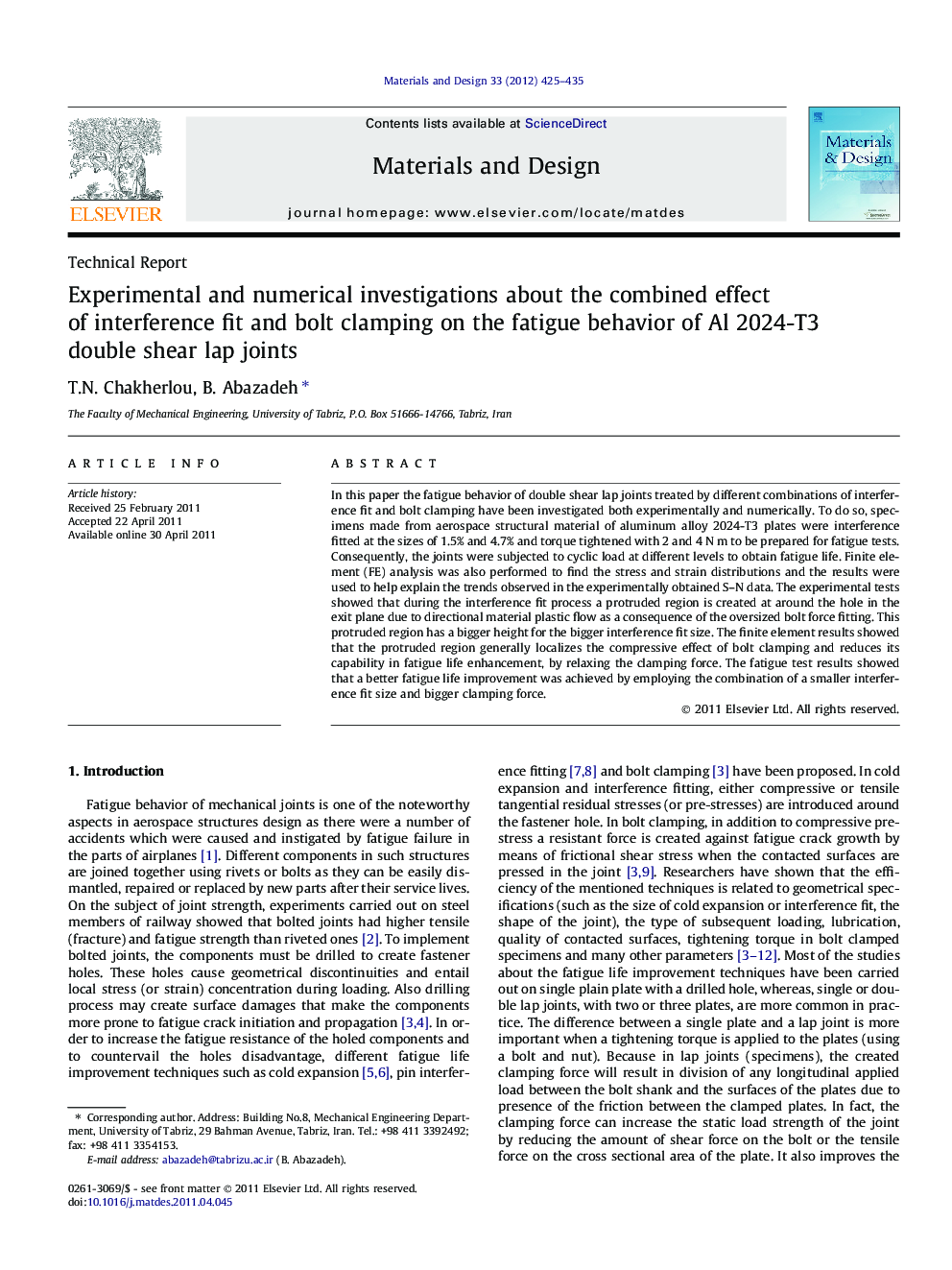| Article ID | Journal | Published Year | Pages | File Type |
|---|---|---|---|---|
| 831163 | Materials & Design (1980-2015) | 2012 | 11 Pages |
In this paper the fatigue behavior of double shear lap joints treated by different combinations of interference fit and bolt clamping have been investigated both experimentally and numerically. To do so, specimens made from aerospace structural material of aluminum alloy 2024-T3 plates were interference fitted at the sizes of 1.5% and 4.7% and torque tightened with 2 and 4 N m to be prepared for fatigue tests. Consequently, the joints were subjected to cyclic load at different levels to obtain fatigue life. Finite element (FE) analysis was also performed to find the stress and strain distributions and the results were used to help explain the trends observed in the experimentally obtained S–N data. The experimental tests showed that during the interference fit process a protruded region is created at around the hole in the exit plane due to directional material plastic flow as a consequence of the oversized bolt force fitting. This protruded region has a bigger height for the bigger interference fit size. The finite element results showed that the protruded region generally localizes the compressive effect of bolt clamping and reduces its capability in fatigue life enhancement, by relaxing the clamping force. The fatigue test results showed that a better fatigue life improvement was achieved by employing the combination of a smaller interference fit size and bigger clamping force.
► Increasing the tightening torque improves fatigue life of interference fitted-bolt clamped double shear lap joints. ► The effect of different sizes of interference fit and tightening torques depends on the applied cyclic stress amplitude. ► The fatigue crack initiation location depends on the applied cyclic load range. ► The numerically attained SX results have good agreement with experimental fatigue test results.
